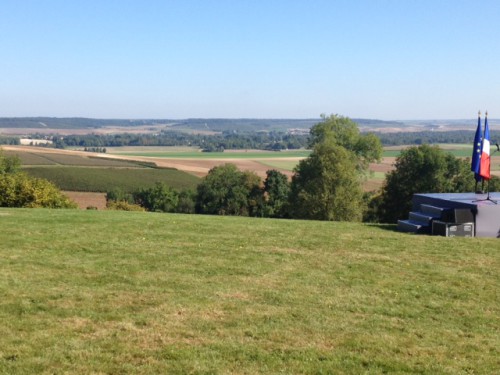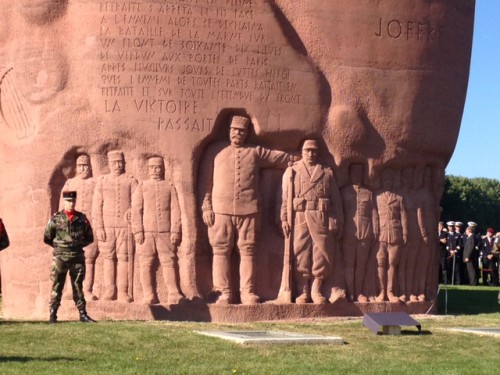12th September 2014 Paris, France
The Battle of the Marne
Today I represented the UK at the commemoration of the Battle of the Marne, which raged for 5 days from 5 September 1914 and was one of the turning points of WW1.
From the start of the War in early August, the German Armies advanced relentlessly across Belgium and into France. The French forces, and the British Expeditionary Force (BEF) that had come to join them, fell back under the onslaught.
By 5 September the front line was only 30 miles from Paris, and General Joffre was preparing to make a stand on the River Seine, the last obstacle before Paris.
Then something strange happened. On 4-5 September, the Germans stopped advancing. It turned out they were worried about attacks on their long supply lines. Joffre and General French, Commander of the BEF, saw an opportunity. They ordered their forces to about-turn and start counter-attacking. Along a front of 250km ferocious battles developed as the French and British Armies pushed the Germans back.
To do this they had to cross the valley of the River Marne. In the village of La Ferté sous Jouarre, British military engineers managed to build a pontoon bridge across the River under heavy fire on 9 September. Here’s the memorial to their bravery.

Further along the front, the French forces had to capture a strategic ridge at Mondemont. That’s where they held their official 100th anniversary commemoration on 12 September this year. Here is the view from the ridge over the Marne Valley and the monument erected later


The German forces retreated more than 60 miles. Paris was saved. Allied Generals started guessing how long it would be before they were in Germany: three weeks? Four? But the Germans dug in along the River Aisne. Four years of trench warfare had begun.